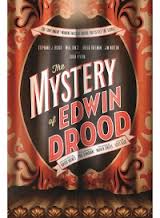 |
| Playwright Melissa James Gibson and Director Daniel Aukin Photo by Sara Krulwich/The New York Times |
There was an interesting article in The New York Times yesterday about efforts to clarify definitions of various personality disorders. One example given was that of narcissism, characterized by such traits as manipulativeness and callousness. What comes to mind is someone like Bernie Madoff, the convicted stockbroker who callously and with malicious intent manipulated his clients into trusting him with their money in what turned out to be a grand Ponzi scheme.
I thought of Madoff while watching Melissa James Gibson’s new play, What Rhymes With America, at the Atlantic Theater
Company. In it, we are introduced to Hank (Chris Bauer), a man who shows us
that it is quite possible to be manipulative and callous without necessarily having
malicious intent.
Even though this is a comedy, and often quite a funny one, there is a
disturbing undertone as we watch Hank—intentionally or otherwise—hurt and
possibly more deeply wound the women in his life.
There is his wife, unseen, who has tossed Hank out after he has bilked
her of her retirement savings, the last straw in a long history of denial,
excuses, and irresponsible behavior.
There is his melancholy teenaged daughter Marlene (Aimee Carrero), taken
to writing sighing songs with rhymes like “oyster” and “cloister” and forced to
talk to her father through the locked door of her mother’s apartment. (Has a restraining order been issued?)
For Marlene, Hank plays the role of the misjudged spouse and the concerned and caring dad, who coincidentally happens to be a little short of cash when asked about the 20 weeks of allowance he owes his daughter.
For Marlene, Hank plays the role of the misjudged spouse and the concerned and caring dad, who coincidentally happens to be a little short of cash when asked about the 20 weeks of allowance he owes his daughter.
There is Sheryl (Da’Vine Joy Randolph, Tony nominee for her portrayal of Oda
Mae in the recent Broadway production of Ghost). She and Hank have temporary jobs performing tiny roles in a production of Wagner’s “Ring Cycle.” They often take cigarette
breaks together, during which Sheryl, who longs to play Lady Macbeth, bemoans
her fate: “I wanted to be an actress;
instead I’m a Viking.”
For Sheryl, who has developed a crush on Hank, he plays the role of the sympathetic listener, which she unfortunately interprets as reciprocal attraction.
For Sheryl, who has developed a crush on Hank, he plays the role of the sympathetic listener, which she unfortunately interprets as reciprocal attraction.
Finally, there is Lydia (Seana Kofoed in a standout performance), a
timid, awkward, and vulnerable soul who allows herself to be romanced by Hank. He, in turn, treats her in a most callous fashion that spirals his casual
narcissism to stratospheric heights.
There is no doubt that Ms. Gibson, who has garnered praise and awards for such plays as [sic]
and This, is a talented playwright and a very clever wordsmith.
Who else do you know who can use words like “supernumerary” and “hippocampus” as punchlines?
She also does a fine job crafting individual scenes, and director Daniel
Aukin, who has worked with the playwright before, handles these well.
But the problem with What Rhymes With America is that there is not enough meat on the bones. Each scene sort of hangs there by itself, and it becomes incumbent on the audience to make the connections to a bigger theme, just I have tried to do in this review.
But the problem with What Rhymes With America is that there is not enough meat on the bones. Each scene sort of hangs there by itself, and it becomes incumbent on the audience to make the connections to a bigger theme, just I have tried to do in this review.
The play, running 85 minutes with no intermission, received a tepid
reception from the audience at the performance I attended. The man behind me grumbled his displeasure
throughout, and towards the end increased the volume of his negative comments,
calling the play the “biggest piece of shit" he’d ever seen. All I can say is, sir, you don’t get out
much, do you?
So, no, it does not come even close to the gentleman's colorful description. Let's call it a minor or unfinished work by a significant and always interesting playwright. Long may her hippocampus function!
So, no, it does not come even close to the gentleman's colorful description. Let's call it a minor or unfinished work by a significant and always interesting playwright. Long may her hippocampus function!
Feel free to tell your friends about this blog, and to share your own theater stories by posting a comment.
